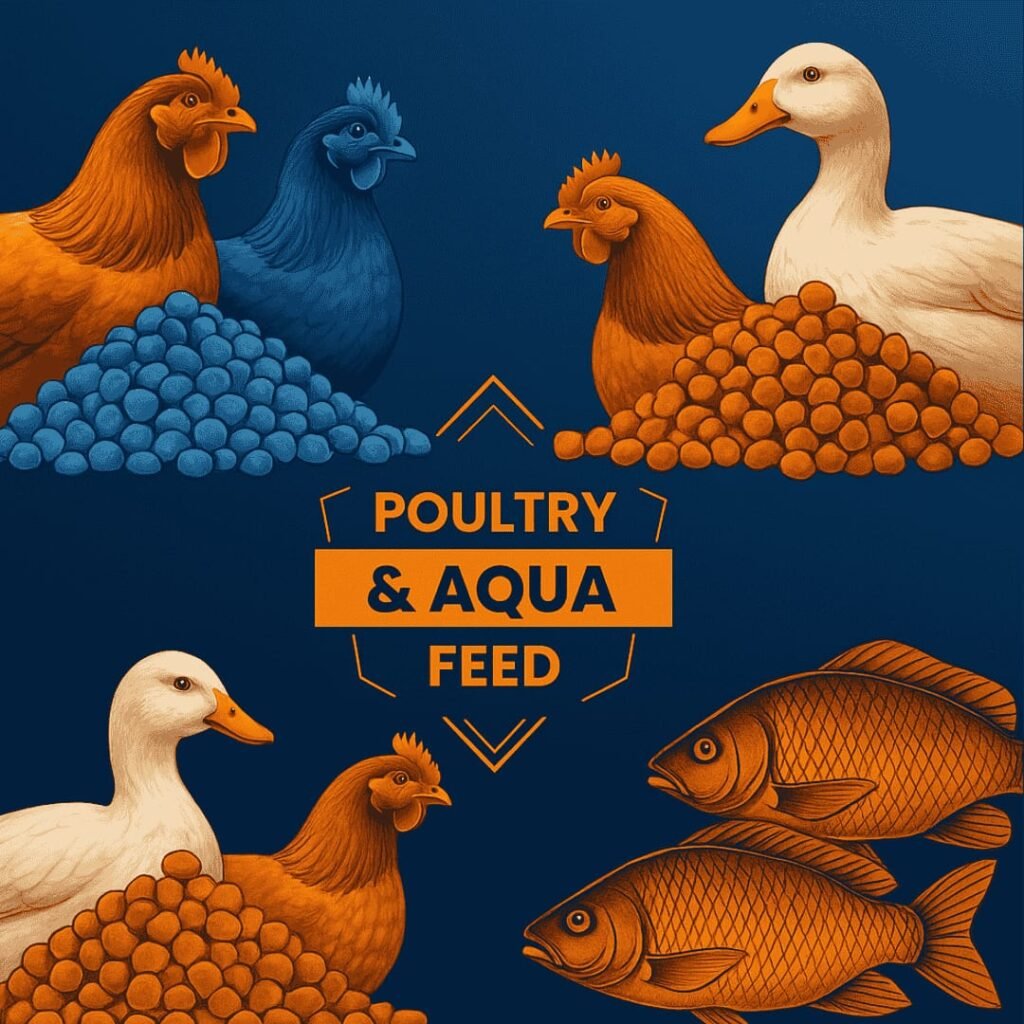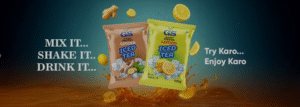The Indian livestock and aquaculture sectors are witnessing significant transformation, driven by rising protein consumption, improved farming practices, and evolving global export opportunities. Two key pillars supporting this growth are Poultry Feed Manufacturing and Aqua Feed Manufacturing—each with unique formulation requirements, process complexities, and market dynamics.
Animal Feed Market in India: Current Size and Outlook
India’s animal feed industry is among the largest in the world, segmented across cattle, poultry, and aquaculture.
| Segment | Estimated Market Size (2024) | Projected CAGR (2024–2030) |
|---|---|---|
| Poultry Feed | ₹85,000 crore | 8–10% |
| Aqua Feed | ₹25,000 crore | 10–12% |
| Cattle Feed (Reference) | ₹1.2 lakh crore | 6–7% |
Poultry Feed Manufacturing has gained traction due to the expansion of the broiler and layer industries, with demand from both integrated operations and contract farmers.
Aqua Feed Manufacturing is showing the fastest growth, fueled by India’s strong presence in shrimp exports and increasing inland fish production.
Protein Requirements in Feed: A Core Technical Parameter
Protein plays a critical role in animal growth, feed efficiency, and profitability. The protein needs vary drastically by species and production goals.
| Feed Type | Typical Crude Protein (%) | Technical Focus |
|---|---|---|
| Poultry Feed | 18–24% | Broiler starter and layer feeds require precise amino acid balance. |
| Aqua Feed | 32–45% | High digestibility and water stability critical for fish/shrimp. |
| Cattle Feed | 12–18% | Focused on rumen efficiency and milk yield. |
While poultry diets rely heavily on plant-based proteins like soybean meal, aqua feed often includes marine proteins, hydrolyzed fish meal, or soybean protein concentrate to meet the digestibility requirements of aquatic species.
Feed Manufacturing Process: Key Differences
Poultry Feed Manufacturing
Involves grinding, mixing, pelleting, and crumbling.
Requires consistency in formulation, pellet durability, and microbial safety.
Ingredients: maize, soybean DOC, rice bran, mineral-vitamin premix.
Aqua Feed Manufacturing
Utilizes fine grinding, extrusion or pellet pressing, and vacuum coating.
High emphasis on water stability, low nutrient leaching, and digestibility.
Ingredients: fish meal, shrimp meal, DDGS, wheat gluten, soybean isolate.
The manufacturing process for aqua feed is more complex, requiring tighter process control, higher-quality ingredients, and species-specific formulation to meet commercial aquaculture standards.
Emerging Trends and Future Outlook
Poultry Feed
Transition towards antibiotic-free and functional poultry diets.
Integration of enzymes and phytogenics in broiler/layer feed.
Digitization and automation in commercial feed mills.
Aqua Feed
Shift toward plant-based protein alternatives to reduce marine dependency.
Development of species-specific floating and sinking feeds.
Expansion of Recirculating Aquaculture Systems (RAS) creating demand for high-performance feed.
By 2030, Poultry Feed Manufacturing is expected to exceed ₹1.25 lakh crore, while Aqua Feed Manufacturing may cross ₹50,000 crore—driven by innovation, export growth, and sustainability requirements.
Conclusion
The technical differences between poultry and aqua feed go beyond ingredients—they reflect the biology of the animals, the precision of feed systems, and the maturity of the supply chains. A clear understanding of protein requirements, formulation science, and market trends is essential for aligning with the future of India’s animal nutrition sector.
Whether scaling up an existing facility or planning for future growth, stakeholders in Poultry Feed Manufacturing and Aqua Feed Manufacturing must stay ahead of nutritional standards, raw material quality, and evolving industry demands







